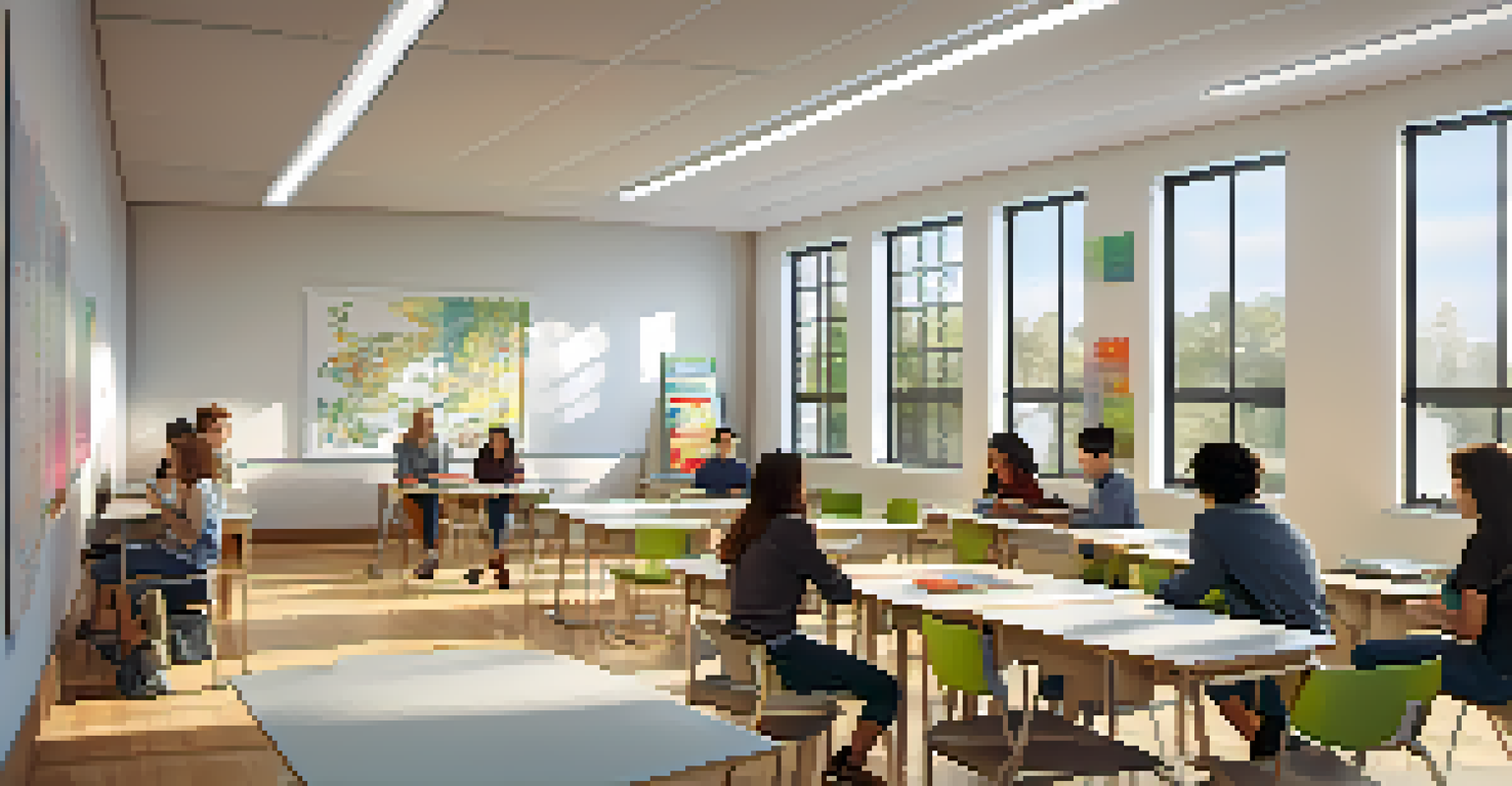The Significance of Quiet Spaces in Learning Environments

Understanding the Role of Quiet Spaces in Learning
Quiet spaces play a crucial role in creating an optimal learning environment. They provide a refuge from distractions, allowing students to concentrate better on their tasks. In a world filled with constant noise and activity, these serene areas help to foster deep thinking and creativity.
In quietude, we find clarity. Silence can be a powerful tool for learning and growth.
When students are in a quiet space, they can immerse themselves in their studies, leading to improved retention of information. This environment allows for reflection and contemplation, which are vital for problem-solving and critical thinking. Imagine a student working on an important project; a quiet nook can make all the difference.
In essence, quiet spaces are not just about silence; they are about creating an atmosphere that encourages learning. By minimizing auditory distractions, these spaces help to enhance focus, making it easier for students to absorb and process information effectively.
The Impact of Noise on Learning and Concentration
Research shows that noise can significantly hinder learning and concentration. When students are exposed to continuous sounds, whether it's chatter or background music, their ability to focus diminishes. This can lead to a decrease in academic performance and overall engagement.

Consider a bustling classroom where students are trying to read or write. The competing sounds can be overwhelming, leading to frustration and a lack of productivity. In contrast, a quiet space allows for a more peaceful and conducive atmosphere for learning.
Quiet Spaces Enhance Learning
Quiet spaces provide students with an essential environment to focus, leading to improved information retention and critical thinking.
By understanding the detrimental effects of noise, educators and institutions can prioritize the creation of quiet spaces. This proactive approach can enhance the learning experience and ultimately lead to better academic outcomes for students.
Designing Effective Quiet Spaces in Educational Settings
Designing effective quiet spaces involves careful consideration of layout and furnishings. Comfortable seating, natural lighting, and sound-absorbing materials can transform a regular room into a serene learning oasis. Such thoughtfully designed areas encourage students to spend time there.
The quieter you become, the more you can hear.
Incorporating elements of nature, like plants or water features, can further enhance the tranquility of these spaces. This connection to nature has been shown to reduce stress and promote relaxation, making it easier for students to engage in their studies. Think of a cozy reading corner surrounded by greenery.
Ultimately, the goal is to create a welcoming environment that invites students to step away from the hustle and bustle of their daily routines. With the right design, quiet spaces can become a go-to spot for students seeking focus and clarity in their learning.
Benefits of Quiet Spaces for Mental Health and Well-being
Quiet spaces offer significant benefits for mental health and well-being. They provide students with a chance to unwind and recharge, which is essential in today's fast-paced academic landscape. Taking a break in a calm environment can help reduce stress and anxiety levels.
Moreover, these spaces encourage mindfulness, allowing students to practice being present in the moment. This practice can lead to better emotional regulation and resilience, skills that are vital for navigating the challenges of school and life. Picture a student taking a few deep breaths in a quiet corner before tackling a tough exam.
Noise Disrupts Concentration
Research indicates that noise can significantly hinder students' ability to concentrate, negatively impacting their academic performance.
By prioritizing the creation of quiet spaces, schools and universities can promote a healthier learning environment. This investment in student well-being can lead to improved focus, academic success, and overall happiness.
Quiet Spaces and Collaborative Learning Opportunities
While quiet spaces emphasize solitude, they can also support collaborative learning. When students have access to a calm environment, they can engage in more productive group discussions and brainstorming sessions. The absence of noise allows for clearer communication and deeper connections.
Imagine a group project where students gather in a quiet room to share ideas. The peaceful setting encourages open dialogue, allowing each member to contribute their thoughts without feeling overwhelmed by external distractions. This can lead to a more cohesive and successful collaboration.
Thus, quiet spaces can serve as multifunctional areas that foster both individual study and collaborative efforts. By balancing these two aspects, educational institutions can create a comprehensive learning environment that meets diverse student needs.
The Role of Educators in Promoting Quiet Spaces
Educators play a pivotal role in promoting the use of quiet spaces within learning environments. By encouraging students to utilize these areas, teachers can help them recognize the importance of focus and mindfulness in their studies. This guidance can lead to better study habits and time management skills.
Additionally, educators can model appropriate behaviors by taking time for quiet reflection themselves. When teachers prioritize their own well-being, they set a positive example for students. This can create a culture of respect for quiet spaces across the school community.
Design Matters for Quiet Areas
Effective design of quiet spaces, incorporating comfort and natural elements, creates inviting environments that promote student well-being and focus.
In this way, educators become champions for the incorporation of quiet spaces into the learning experience. Their support can significantly enhance the overall educational atmosphere, benefiting both students and staff alike.
The Future of Quiet Spaces in Education
As educational institutions evolve, the concept of quiet spaces will likely gain even more significance. With the rise of technology and online learning, the need for focused environments remains critical. Quiet spaces can adapt to these changes, providing a sanctuary amidst the digital noise.
In the future, we may see more innovative designs and uses of quiet spaces, incorporating elements like virtual reality or soundproof technology. These advancements can further enhance the learning experience, making quiet spaces even more effective.

Ultimately, the importance of quiet spaces in education will continue to be recognized and valued. By prioritizing these areas, we can create an enriching environment that supports student growth, well-being, and academic success.